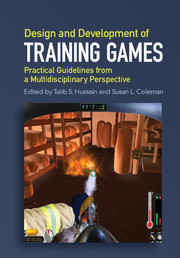Refine search
Actions for selected content:
2860 results in Computing and Society
Plate section
-
- Book:
- Interactions with Search Systems
- Published online:
- 05 March 2016
- Print publication:
- 14 March 2016, pp 511-513
-
- Chapter
- Export citation
Part IV - Opportunities and Challenges
-
- Book:
- Interactions with Search Systems
- Published online:
- 05 March 2016
- Print publication:
- 14 March 2016, pp 385-386
-
- Chapter
- Export citation

Interactions with Search Systems
-
- Published online:
- 05 March 2016
- Print publication:
- 14 March 2016

The Cambridge Handbook of Applied Perception Research
-
- Published online:
- 05 July 2015
- Print publication:
- 26 January 2015
2 - Political Opinion
-
-
- Book:
- Twitter: A Digital Socioscope
- Published online:
- 05 May 2015
- Print publication:
- 05 May 2015, pp 52-74
-
- Chapter
- Export citation
List of Contributors
-
- Book:
- Twitter: A Digital Socioscope
- Published online:
- 05 May 2015
- Print publication:
- 05 May 2015, pp vii-viii
-
- Chapter
- Export citation
Frontmatter
-
- Book:
- Twitter: A Digital Socioscope
- Published online:
- 05 May 2015
- Print publication:
- 05 May 2015, pp i-iv
-
- Chapter
- Export citation
4 - Hyperlocal Happiness from Tweets
-
-
- Book:
- Twitter: A Digital Socioscope
- Published online:
- 05 May 2015
- Print publication:
- 05 May 2015, pp 96-110
-
- Chapter
- Export citation
6 - Disaster Monitoring
-
-
- Book:
- Twitter: A Digital Socioscope
- Published online:
- 05 May 2015
- Print publication:
- 05 May 2015, pp 131-160
-
- Chapter
- Export citation
1 - Analyzing Twitter Data
-
-
- Book:
- Twitter: A Digital Socioscope
- Published online:
- 05 May 2015
- Print publication:
- 05 May 2015, pp 21-51
-
- Chapter
- Export citation

Design and Development of Training Games
- Practical Guidelines from a Multidisciplinary Perspective
-
- Published online:
- 05 May 2015
- Print publication:
- 10 November 2014
Preface
-
- Book:
- Twitter: A Digital Socioscope
- Published online:
- 05 May 2015
- Print publication:
- 05 May 2015, pp ix-x
-
- Chapter
- Export citation
Index
-
- Book:
- Twitter: A Digital Socioscope
- Published online:
- 05 May 2015
- Print publication:
- 05 May 2015, pp 161-173
-
- Chapter
- Export citation
Contents
-
- Book:
- Twitter: A Digital Socioscope
- Published online:
- 05 May 2015
- Print publication:
- 05 May 2015, pp v-vi
-
- Chapter
- Export citation

Twitter: A Digital Socioscope
-
- Published online:
- 05 May 2015
- Print publication:
- 05 May 2015
Introduction
-
-
- Book:
- Twitter: A Digital Socioscope
- Published online:
- 05 May 2015
- Print publication:
- 05 May 2015, pp 1-20
-
- Chapter
- Export citation
3 - Socioeconomic Indicators
-
-
- Book:
- Twitter: A Digital Socioscope
- Published online:
- 05 May 2015
- Print publication:
- 05 May 2015, pp 75-95
-
- Chapter
- Export citation
5 - Public Health
-
-
- Book:
- Twitter: A Digital Socioscope
- Published online:
- 05 May 2015
- Print publication:
- 05 May 2015, pp 111-130
-
- Chapter
- Export citation
ADVANCE PRAISE FORTHE CAMBRIDGE HANDBOOK OF APPLIED PERCEPTION RESEARCH
-
- Book:
- The Cambridge Handbook of Applied Perception Research
- Published online:
- 05 July 2015
- Print publication:
- 26 January 2015, pp ii-ii
-
- Chapter
- Export citation
6 - Applied Perception and Neuroergonomics
- from Part I - Background and Methodology
-
-
- Book:
- The Cambridge Handbook of Applied Perception Research
- Published online:
- 05 July 2015
- Print publication:
- 26 January 2015, pp 79-104
-
- Chapter
- Export citation
